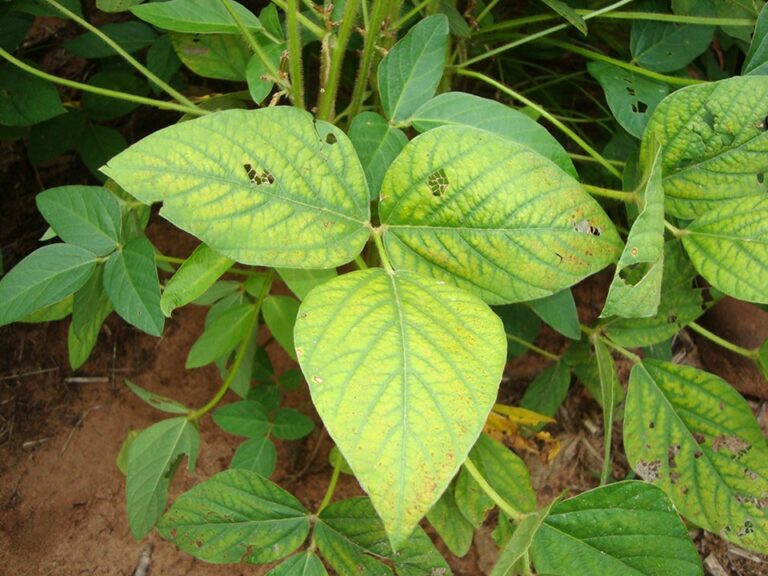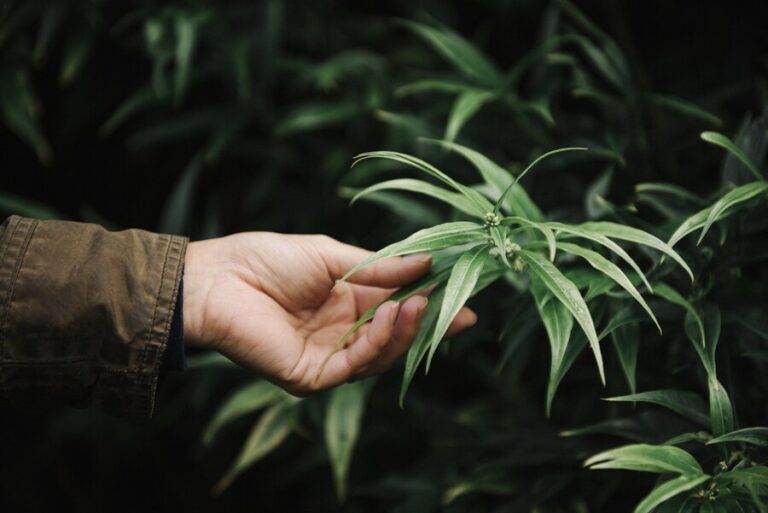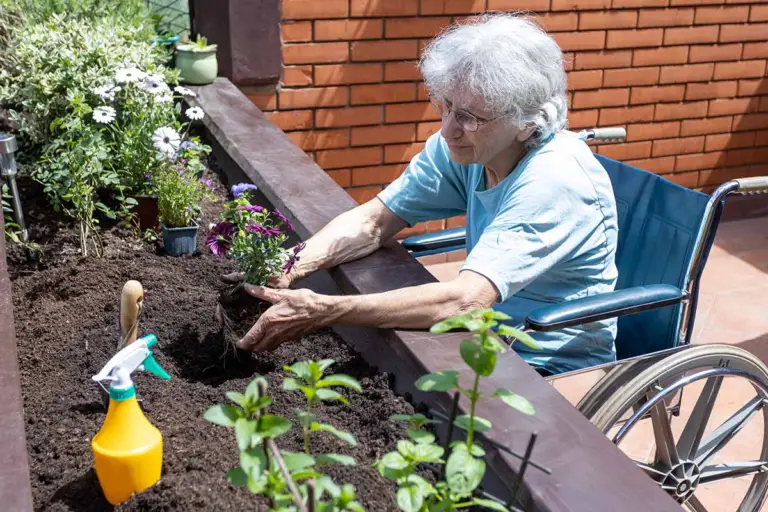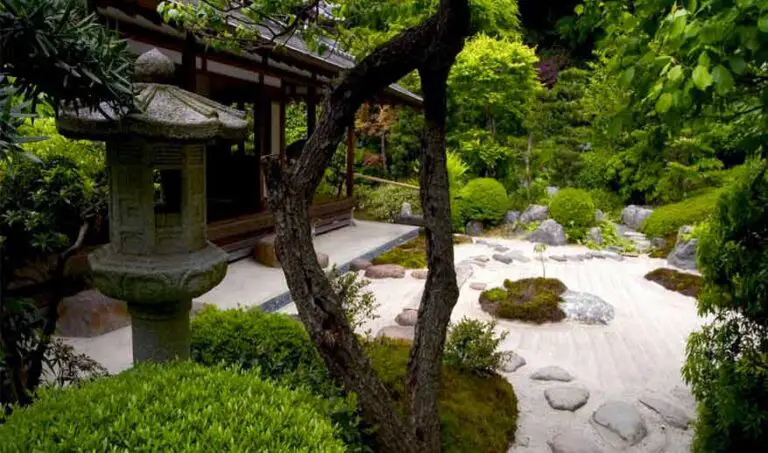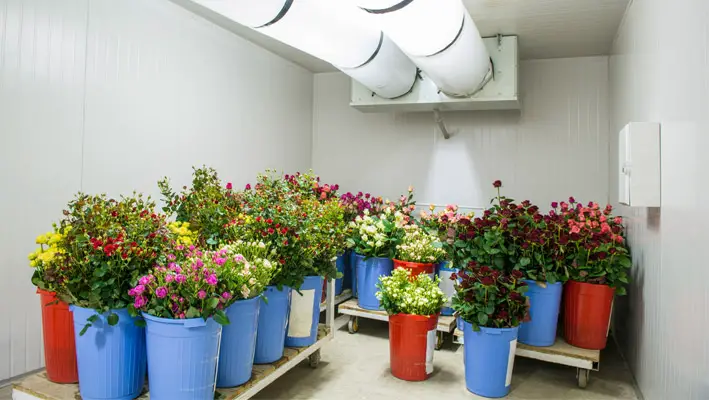Grow Tents vs Grow Cabinets: A Comparison of the Two Types of Indoor Growing Spaces
Table of Contents
Introduction

Grow tents and grow cabinets are two types of indoor growing spaces that have different advantages and disadvantages. Here is a brief comparison of the two:
- Size and space: Grow tents are generally more compact, and suitable for small spaces or apartments. They come in various sizes, but they are typically designed to fit into a corner of a room or a closet. Grow rooms are usually larger and accommodate more plants. A grow room is an entire room in your house or a custom-built structure1.
- Cost and customization: Grow tents are cheaper and easier to set up than grow cabinets. They also offer more flexibility and customization, as you can choose the type and size of your tent, the lighting system, the ventilation system, and the growing medium2. Grow cabinets are more expensive and require more skill and time to build or buy. They are also more limited in terms of design and functionality, as they are usually pre-made and have fixed features2.
- Stealth and security: Grow cabinets have the advantage of being more stealthy and secure than grow tents. They can blend into their surroundings, look like ordinary furniture, and have locked doors3. They are also more light-tight, meaning no light will leak out and draw attention in the dark. Grow tents are more conspicuous and vulnerable, as they are made of fabric and have zippers to close the doors and windows3. They may also emit some light and noise, which can be a problem if you want to keep your growth discreet3.
- Yield and quality: Grow tents can produce higher yields and better quality than grow cabinets, as they have more space and allow for more optimal environmental conditions4. Grow tents can also support larger plants and bigger harvests, as they can be expanded upwards through stacking upgrades4. Grow cabinets can only support small plants and limited crops, as they have restricted height and lighting power4. Grow cabinets may also have issues with heat, humidity, and airflow, which can affect the health and growth of your plants4.
Structure and Design: Understanding the fundamental differences

Structure and design are key factors to consider when setting up an indoor gardening space. The choices you make in terms of structure and design can greatly impact the functionality and productivity of your growing area. There are several fundamental differences to understand when it comes to structure and design options.
One of the main differences lies in the choice between a prefabricated grow tent or a DIY setup. Prefabricated grow tents offer a convenient and ready-to-use solution, with various sizes and configurations available to suit different needs. On the other hand, DIY setups allow for a more customizable and flexible approach, as you have complete control over the design and layout of the space. Considerations such as available space, budget, and personal preferences should all be taken into account when deciding between these two options.
Size and Space: Evaluating the available growing area
When evaluating the available growing area for your indoor garden, size, and space are crucial factors to consider. The amount of space you have will determine what plants you can grow and how many you can cultivate at a time.
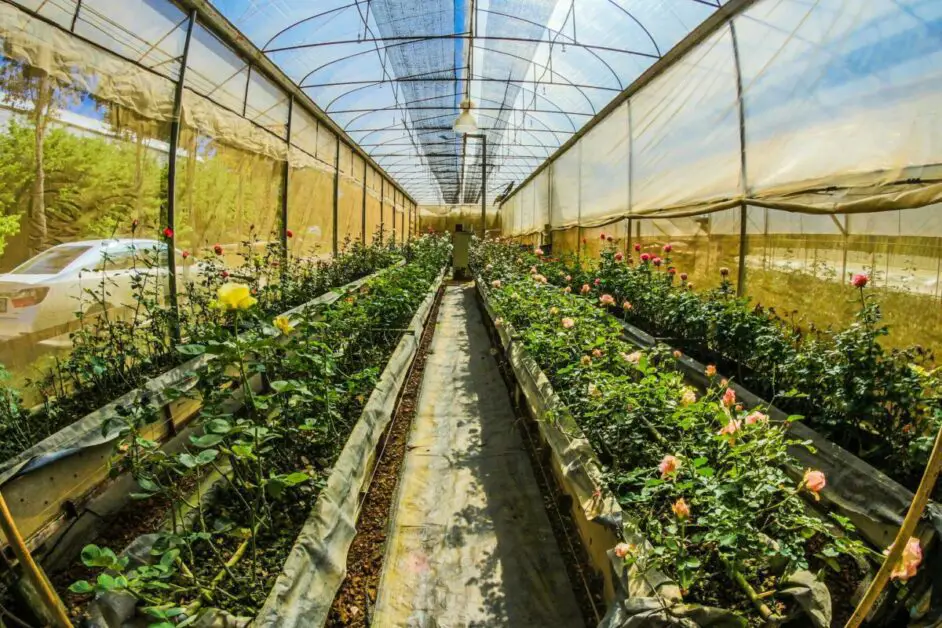
To begin, measure the dimensions of your growing area accurately. This will help you understand the limitations and possibilities of your space. Consider the height, width, and depth of the area. Also, take note of any obstacles such as columns, doors, or windows, which may affect how you arrange your plants. By assessing the available growing area, you can plan accordingly and ensure that your garden fits comfortably in the space provided. Additionally, don’t forget to consider any potential expansion or future growth.
Ventilation and Airflow: Importance of proper air circulation
Proper air circulation is crucial for indoor gardening as it ensures a healthy and productive growing environment. Without adequate ventilation and airflow, plants can suffer from a range of issues, including poor growth, pest infestation, and disease. When the air becomes stagnant and lacks movement, it can create a breeding ground for harmful pathogens and fungi. Additionally, a lack of fresh air can inhibit photosynthesis and the exchange of gases, leading to reduced oxygen levels and increased carbon dioxide buildup in the growing space.
To maintain optimal air circulation, it is essential to implement a well-designed ventilation system. This typically involves the use of exhaust fans to remove stale air and bring in fresh air from outside. Airflow can be further enhanced with the aid of circulation fans strategically positioned to ensure even distribution throughout the growing area. By maintaining a steady flow of air, growers also prevent the formation of hotspots, which can be detrimental to plants and cause stress or leaf damage. Proper ventilation and airflow not only keep plants healthy but also create a more habitable environment for growers, reducing the risk of mold or mildew growth and minimizing odors.
• Proper air circulation is crucial for indoor gardening as it ensures a healthy and productive growing environment.
• Inadequate ventilation and airflow can lead to poor growth, pest infestation, and disease in plants.
• Stagnant air without movement creates a breeding ground for harmful pathogens and fungi.
• Lack of fresh air inhibits photosynthesis and gas exchange, resulting in reduced oxygen levels and increased carbon dioxide buildup.
• Implementing a well-designed ventilation system is essential for maintaining optimal air circulation.
• Exhaust fans should be used to remove stale air and bring in fresh air from outside.
• Circulation fans strategically positioned aid in enhancing airflow throughout the growing area.
• Steady airflow prevents the formation of hotspots that can cause stress or leaf damage to plants.
• Proper ventilation also reduces the risk of mold or mildew growth and minimizes odors.
Lighting Options: Exploring the different lighting setups
When it comes to lighting options for indoor gardening, there are several setups to consider. The choice of lighting depends on the specific needs of the plants being grown and the available space. One common lighting setup is fluorescent lights, which are popular for seed starting and growing small, leafy greens. These lights are energy efficient and provide a good amount of light for the initial stages of plant growth. Another option is high-intensity discharge (HID) lights, which include metal halide (MH) and high-pressure sodium (HPS) lights. These lights are known for their high output and can provide the intense lighting required for flowering and fruiting plants. However, they do generate a significant amount of heat, which needs to be managed properly. LED (light-emitting diode) lights have gained popularity in recent years due to their energy efficiency and customizable spectrum. They are a great option for overall plant growth and can be adjusted to mimic different stages of sunlight. Additionally, they produce less heat, reducing the risk of plant damage. Overall, the choice of lighting setup depends on factors such as plant needs, energy efficiency, and heat management, and it is important to select the right setup to optimize growth and yield.
In order to determine the most suitable lighting setup for your indoor garden, it is essential to consider the specific needs of the plants being grown. Different plants have different light requirements, and providing the right amount and quality of light is crucial for their growth and development. For example, plants that need high light intensity, such as tomatoes or peppers, may require high-intensity lights like HPS or MH. On the other hand, leafy greens like lettuce or herbs can thrive under fluorescent or LED lights. It is also important to consider the light spectrum. Plants require a specific balance of red, blue, and other wavelengths to carry out photosynthesis effectively. LED lights offer the advantage of customizable spectra, allowing growers to tailor the lighting to the specific needs of their plants. Additionally, it is important to consider the energy efficiency and heat generated by the lighting setup. LED lights are known for their energy efficiency and produce less heat compared to other options, which can significantly impact the overall energy consumption and temperature management of the indoor garden. By carefully evaluating the light requirements of the plants and considering factors such as spectrum, energy efficiency, and heat management, growers can select the most suitable lighting setup to maximize their indoor gardening success.
Certainly! Here’s a breakdown of different lighting setups commonly used in indoor growing environments:
| Lighting Options: Exploring Different Setups | Description | Ideal For |
|---|---|---|
| 1. High-Intensity Discharge (HID) Lights | – Powerful lights emitting intense light and heat. | – Large grow spaces with ample ventilation. |
| – Types: Metal Halide (MH) for vegetative growth, High-Pressure Sodium (HPS) for flowering. | – Indoor gardens requiring high light intensity. | |
| 2. Light-Emitting Diodes (LED) Lights | – Energy-efficient lights with customizable spectrum and intensity. | – Versatile setups for various growth stages. |
| – Types: Full-spectrum LEDs, adjustable LEDs, supplemental LEDs. | – Growers seeking energy savings and spectrum control. | |
| 3. Fluorescent Lights | – Affordable and efficient lights emitting lower heat. | – Seedlings, clones, and small-scale growing. |
| – Types: Compact Fluorescent Lamps (CFL), T5 Fluorescent Tubes. | – Beginners or growers with limited space and budget. | |
| 4. Ceramic Metal Halide (CMH) Lights | – Blend of MH and LED technology, emitting a broad spectrum. | – Mid-sized grow areas requiring balanced light spectrum. |
| – Provides full-spectrum light with high efficiency and reduced heat output. | – Growers aiming for high-quality yields with lower energy consumption. | |
| 5. Plasma Lights | – High-intensity, full-spectrum lights with low energy consumption. | – Indoor gardens focusing on quality and efficiency. |
| – Emits a balanced spectrum similar to natural sunlight. | – Growers seeking premium lighting for optimal plant growth. |
Temperature and Humidity Control: Managing optimal growing conditions
Maintaining the optimal temperature and humidity levels is crucial for successful indoor gardening. These factors play a significant role in the growth and development of plants, ensuring they receive the right conditions to thrive.
Temperature control is essential as it directly affects the metabolic processes of plants. Different plant species have specific temperature preferences, and providing them with the ideal temperature range can greatly enhance their productivity. For instance, most common leafy greens, such as lettuce and spinach, prefer temperatures between 60 to 70 degrees Fahrenheit (15 to 21 degrees Celsius). On the other hand, tropical plants like tomatoes and peppers thrive in slightly higher temperatures, ranging from 70 to 85 degrees Fahrenheit (21 to 29 degrees Celsius). By monitoring and adjusting the temperature within these optimal ranges, indoor gardeners can maximize plant growth and yield.
Humidity control is equally important in indoor gardening. The humidity level refers to the amount of moisture present in the air, and it greatly impacts how plants take in and release water through their leaves. Maintaining adequate humidity levels can prevent issues such as wilting, leaf loss, and disease development. Most indoor plants thrive in a humidity range of 40% to 60%. However, specific plant species may have different requirements. For instance, tropical plants typically thrive in higher humidity levels, while succulents prefer drier conditions. Proper humidity control ensures that plants can transpire effectively, absorbing water and nutrients from their roots and releasing oxygen into the environment. With the right temperature and humidity conditions, indoor gardeners can create an ideal microclimate for their plants, promoting healthy growth and development.
Cost Considerations: Analyzing the upfront and long-term expenses
Analyzing the upfront and long-term expenses is a crucial step when considering the cost of setting up and maintaining an indoor growing space. The initial investment can vary depending on factors such as the size of the space, the construction materials used, and any additional equipment required. It is important to carefully consider these costs and choose options that offer the best value for money.
In the long term, ongoing expenses such as electricity, water, and nutrients should also be taken into account. Different growing methods and setups can have varying energy and resource requirements, which can impact the overall cost of operation. It is worth considering energy-efficient options, such as LED lighting and automated systems, as they can help minimize energy consumption and reduce long-term expenses. Additionally, investing in quality equipment and materials that are built to last can save money in the long run by reducing the need for frequent replacements or repairs. By carefully analyzing the upfront and long-term expenses, indoor growers can make informed decisions and ensure that their indoor gardens are both cost-effective and sustainable.
Customizability and Flexibility: Adapting the growing space to your needs
When it comes to cultivating plants indoors, customizability and flexibility are key factors to consider for adapting the growing space to your needs. One of the advantages of indoor gardening is the ability to create a growing environment tailored to the specific requirements of your plants. Whether you’re growing leafy greens, herbs, or flowering plants, having the freedom to adjust factors such as light, temperature, and humidity can greatly impact the success of your garden.
With a customizable indoor growing setup, you can choose the size and layout that suits your available space and preferred growing methods. From small, compact setups for apartments to larger systems for dedicated grow rooms, there are options to accommodate various needs. Additionally, customizability extends to the accessories and add-ons available, allowing you to optimize your growing space even further. Whether it’s adding trellises for climbing plants or incorporating automated irrigation systems, the ability to adapt your indoor garden to your specific requirements is invaluable.
Noise and Odor Control: Minimizing disruptions and smells
As any indoor gardener knows, noise and odor control are crucial aspects when it comes to maintaining a pleasant and enjoyable growing environment. The last thing you want is to be constantly disrupted by loud humming noises or overwhelmed by unpleasant smells. That’s why it’s important to invest in appropriate measures to minimize these disruptions and keep your growing space odor-free.
One effective solution for noise control is the use of soundproofing materials. These materials, such as foam insulation or acoustic panels, can help absorb and reduce the noise produced by equipment like pumps, fans, or air conditioners. By placing these materials strategically around your growing space, you can significantly decrease the overall noise level and create a more peaceful and tranquil atmosphere.
Similarly, managing and eliminating odors is a key consideration for indoor gardeners. Certain plants, particularly those with strong scents, can release odors that may be overpowering and undesirable. To combat this, the use of activated carbon filters in ventilation systems can be highly effective. These filters work by trapping and neutralizing odors, ensuring that the air circulating in your growing space remains fresh and odor-free.
By taking these measures to minimize noise disruptions and control odors, you can create a more harmonious and enjoyable indoor gardening experience. Investing in soundproofing materials and activated carbon filters will not only enhance your own comfort but also contribute to a healthier and more conducive environment for your plants to thrive.
Durability and Longevity: Assessing the lifespan of each option
When considering a growing option for your indoor garden, it is crucial to assess the durability and longevity of each choice. Investing in a growing system that can withstand the test of time is essential for long-term success. Whether you are a beginner or a seasoned indoor gardener, understanding the lifespan of various options will help you make an informed decision.
One option known for its durability is the modular hydroponic system. These systems are often constructed using sturdy materials such as stainless steel or heavy-duty plastic, ensuring their ability to withstand regular use and potential wear and tear. With proper maintenance and care, these systems can last for several years, providing you with a reliable and long-lasting growing solution. Additionally, modular hydroponic systems are designed for easy replacement of individual components, allowing for flexibility and adaptability as your needs evolve over time.
Ease of Assembly and Maintenance: Comparing the setup and upkeep
When it comes to setting up and maintaining an indoor gardening system, ease of assembly and maintenance are crucial factors to consider. These aspects can make a significant difference in how much time, effort, and resources you will need to dedicate to your indoor garden.
The setup process for indoor gardens can vary depending on the type of system you choose. Some systems, such as hydroponics or aeroponics, may require more initial setup work compared to traditional soil-based systems. However, these systems often come with detailed instructions and user-friendly components, making the assembly process more manageable.
Maintenance is another key consideration for indoor gardens. Regular tasks such as watering, fertilizing, pruning, and pest control need to be carried out to ensure optimal plant growth and health. Again, the level of maintenance required can vary depending on the system and the types of plants you are growing. Some hydroponic systems, for instance, may require more frequent nutrient monitoring and adjustment than traditional soil-based gardens.
Considering your gardening experience, available time, and level of commitment, it’s essential to choose an indoor gardening system that aligns with your needs and capabilities. Always refer to the manufacturer’s instructions and follow the recommended maintenance practices to ensure the longevity and success of your indoor garden.
Energy Efficiency: Determining the power consumption
Determining the power consumption of indoor gardening setups is crucial for both cost and energy efficiency considerations. The amount of electricity used by your growing space directly impacts your utility bills and your environmental footprint. To accurately evaluate the power consumption of different setups, it’s essential to consider the specific components and their energy requirements.
One major factor in power consumption is the choice of lighting. Traditional high-intensity discharge (HID) lights, such as metal halides and high-pressure sodium lamps, have been widely used in indoor gardens. However, they are known for their high energy consumption and heat production. In recent years, LED (light-emitting diode) technology has gained popularity due to its energy efficiency and longer lifespan. LED lights can provide the same or even better light intensity as HID lights while using significantly less electricity. According to a study published in the journal Environmental Science and Pollution Research, switching from HID lights to LEDs can reduce the energy consumption of lighting systems by up to 50%. This shift can result in substantial long-term savings and a more sustainable indoor gardening operation.
Suitability for Different Plants: Matching the growing space to specific crops
When it comes to indoor gardening, matching the growing space to specific crops is essential for success. Different plants have varying needs when it comes to space requirements, light exposure, temperature, and humidity levels. Understanding these specific requirements will help you create the ideal environment for your plants to thrive.
One of the first considerations when matching your growing space to specific crops is the size of the plants. Some crops, like leafy greens and herbs, have compact roots and don’t require a large growing area. On the other hand, vining plants like tomatoes or cucumbers will need a more significant amount of space to spread their branches and grow. Evaluating the available growing area and considering the potential growth of each crop will help you determine the right setup for your indoor garden.
In addition to size, light exposure is another crucial factor when matching the growing space to specific plants. Some crops, like leafy greens, do well with lower light conditions and can thrive under fluorescent or LED grow lights. However, fruiting plants like peppers or tomatoes require high-intensity lighting, such as high-pressure sodium (HPS) or metal halide (MH) lamps, to support their flowering and fruiting stages. By understanding the lighting needs of different crops, you can choose the appropriate lighting setup that will promote optimal growth and yield.
User Experiences: Real-life stories and testimonials from indoor growers
When it comes to indoor gardening, hearing about real-life experiences from other growers can be incredibly valuable. These stories and testimonials provide insights into what works, what challenges to expect, and what solutions have been successful in various situations. They offer a glimpse into the practical aspects of indoor gardening, showcasing the triumphs and even the occasional setbacks that can arise.
One indoor gardener, Lisa, shared her experience using hydroponics for growing leafy greens. She explained how hydroponics allowed her to maximize space while minimizing the need for soil. Lisa mentioned that she was able to grow an abundant supply of fresh, pesticide-free greens year-round, right in her small apartment. She found the process of managing the nutrient solutions to be relatively simple and enjoyed the convenience of not having to weed or deal with pests. With hydroponics, Lisa felt empowered to have control over her food production and reduce her environmental footprint at the same time.
Another indoor gardener, John, shared his experience using vertical farming systems to grow a variety of herbs and vegetables. He emphasized the efficiency and scalability of vertical farming, which allowed him to achieve high yields in a limited space. John mentioned the ease of using automated systems for watering and nutrient delivery, which saved him time and effort. He also found that the vertical setup provided excellent airflow and light distribution, resulting in healthier and more vibrant plants. Through his experience, John discovered the joy of harvesting his own fresh produce, knowing that it was grown sustainably and without the use of harmful chemicals.
These user experiences demonstrate the potential of indoor gardening and offer valuable insights for aspiring growers. By learning from the successes and challenges faced by others, you can make informed decisions, adapt techniques to suit your own situation, and ultimately enhance your indoor gardening journey. So, whether you’re interested in hydroponics, vertical farming, or other indoor gardening methods, there are real-life stories and testimonials out there to guide you towards success.
Can I use an indoor grow setup for all types of plants?
Indoor grow setups can be used for a wide variety of plants, including herbs, vegetables, flowers, and even some fruit trees. However, certain plants may have specific requirements that need to be considered, such as temperature, humidity, and lighting needs.
How long can I expect an indoor grow setup to last?
The lifespan of an indoor grow setup can vary depending on the quality of materials and how well it is maintained. Generally, a well-built setup can last several years, but it is important to regularly check for any damage or wear and tear that may affect its performance.
How much energy does an indoor grow setup consume?
The energy consumption of an indoor grow setup will depend on factors such as the size of the setup, the type of lighting used, and the duration it is running. LED lights are generally more energy-efficient compared to other lighting options, which can help reduce overall power consumption.
Are indoor grow setups customizable?
Yes, indoor grow setups can often be customized to fit the specific needs of the grower. This can include adding or removing shelves, adjusting the height of the setup, or incorporating additional features such as automatic watering systems or humidity controllers.
How do I control noise and odor in an indoor grow setup?
To minimize disruptions and smells, it is important to invest in proper ventilation and air filtration systems. This will help remove odors and maintain a fresh environment. Additionally, using quiet fans and ensuring proper insulation can help reduce noise levels.
What are the upfront and long-term expenses of an indoor grow setup?
The upfront expenses of an indoor grow setup include the cost of the setup itself, lighting equipment, ventilation systems, and any additional accessories. Long-term expenses may include electricity costs, maintenance, and replacing any worn-out components.
Can I assemble and maintain an indoor grow setup easily?
The ease of assembly and maintenance will depend on the specific setup and your level of experience. Some setups may require more complex assembly and regular maintenance, while others may be designed for easy setup and minimal upkeep. It is important to carefully read the instructions and guidelines provided by the manufacturer.
How important is proper airflow and ventilation in an indoor grow setup?
Proper airflow and ventilation are crucial for an indoor grow setup as they help regulate temperature, remove excess humidity, and prevent the buildup of stale air. Good air circulation also ensures that plants receive fresh CO2 and prevents the growth of mold or mildew.
What are the different lighting options available for indoor grow setups?
There are various lighting options available for indoor grow setups, including fluorescent lights, high-intensity discharge (HID) lights, and LED lights. Each type of lighting has its own advantages and considerations in terms of energy efficiency, spectrum control, and heat production.
Can I adjust the temperature and humidity in an indoor grow setup?
Yes, temperature and humidity control are essential in maintaining optimal growing conditions. This can be achieved through the use of thermostats, humidifiers, dehumidifiers, and fans. Monitoring and adjusting these factors will ensure the best environment for your plants.

